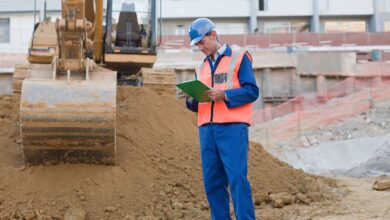
Chimney Repairs: Prevention is always the best cure
A fireplace protects your home from fire hazards, and a chimney does the same. You can prevent dangerous fires and repair costs much greater than those of preventative measures by performing regular chimney inspections and maintaining your chimney properly. Chimney technicians possess the training, experience, and best tools to inspect chimneys. Your best defense against the dangers of operating a fireplace is to have your Chimney repair in Long Island by a professional. You can look for the following things if you plan to do your own chimney and fireplace inspection.
Inspect the Firebox
Fireboxes with loose mortar joints or cracks in the masonry should be repaired. This is usually an easy task for chimney experts. There is a possibility that refractory cement will suffice in sealing the breach. If the firebox is severely damaged, however, it may need to be rebuilt.
Check the Damper
You should be able to easily open and close the damper. Make sure the surface is not cracked, pitted, or excessively rusted by using a flashlight. It may be necessary to have a new damper installed if you observe any of these signs. Damper problems can also lead to higher utility bills. When the damper does not seal adequately, it is like having an open window in your home all year long. You can check the seal by closing the damper doors and placing a dollar bill between them. The seal is inadequate if the bill can easily be pulled out anywhere along the damper doors.
Birds-Eye View
Contacting a chimney sweep for an inspection is one of the best ways to avoid climbing on the roof yourself. If it is safe for you, you can climb on your roof and inspect your chimney. Some of the signs your chimney needs to be repaired are:
How is the condition of the flashing? A metal chimney component is more susceptible to the elements than a brick and mortar component. If even a small rust hole appears on the flashing of your roof, or if the flashing top is not properly sealed against water, the flashing could suffer serious water damage, including structural damage.
Check the joints between the bricks and mortar in your chimney. Masonry can be damaged when moisture penetrates the mortar and causes it to deteriorate. Bricks can also be damaged if they are loose or cracked. If the chimney is leaning, a rebuild may be necessary.
- Inspect the chimney crown, or the cement at the top of the chimney. It is important to repair cracks to prevent moisture from damaging your masonry and flue lining.
- Inspect the chimney cap for damage. You should install one to keep moisture and animals out, as well as a spark guard to protect you from potentially dangerous flying embers.
The Flue
The flue lining can be inspected with a flashlight, but it is best to hire a professional who can use special equipment to perform a thorough video inspection from top to bottom. It only takes a tiny crack in the flue to expose your home to a hazardous chimney fire or even a significant house fire.
The Chimney Safety Institute of America, a reputable authority on fire prevention, suggests that chimneys be inspected every year to ensure their safety. When you detect problems early, you can also avoid costly and extensive damage to your home.




